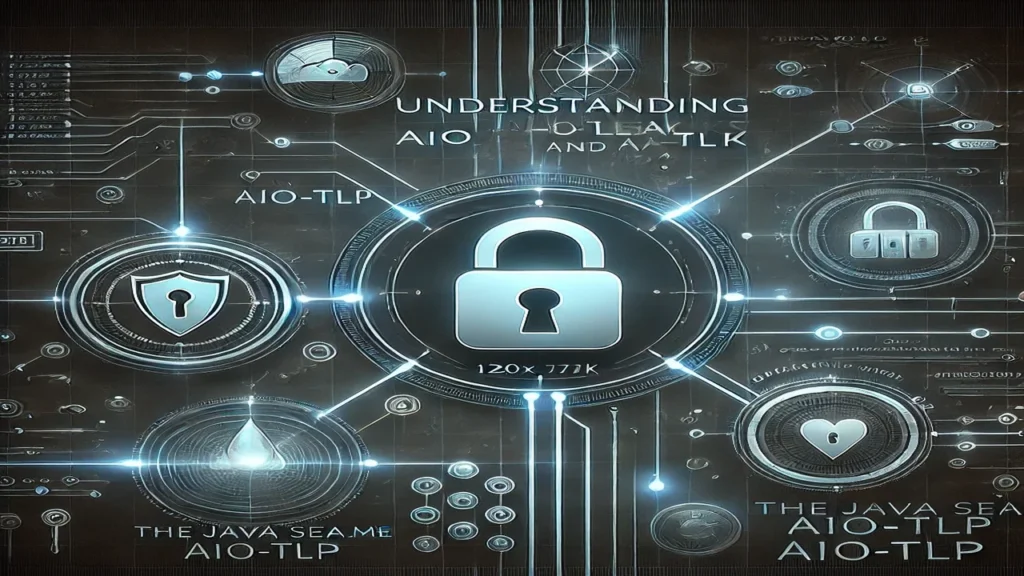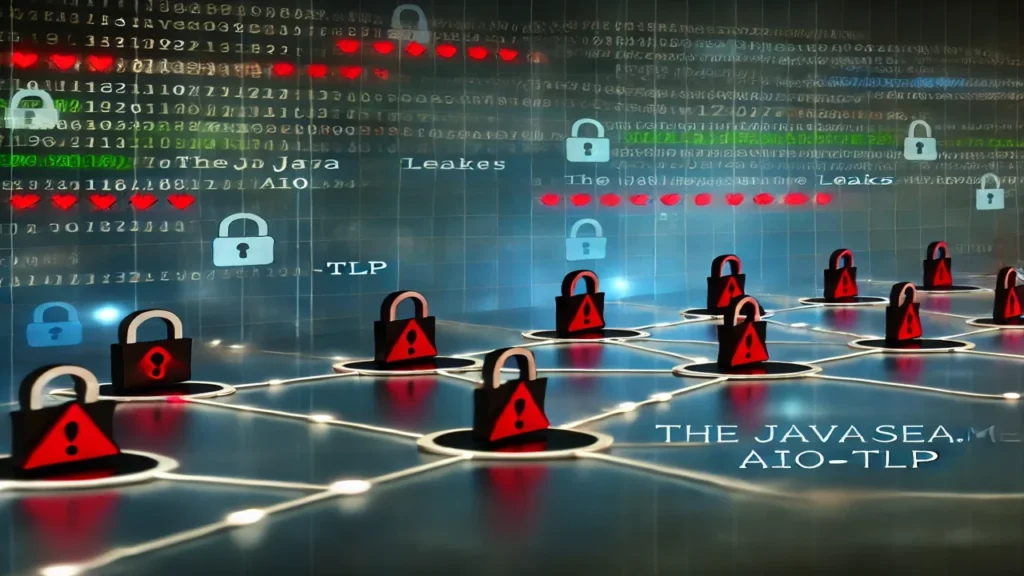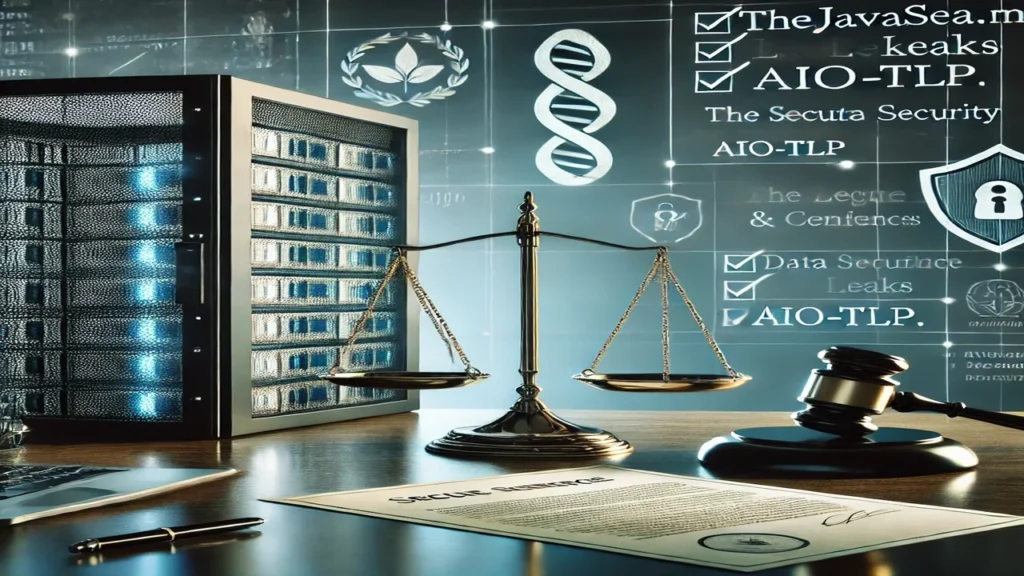Introduction
Data from the All-In-One Threat Intelligence Platform (AIO-TLP) was exposed in a major security breach at Thejavasea.me Leaks Aio-Tlp, which sent shockwaves through the internet. The cybersecurity community is understandably alarmed by this incident, which has shown that even the most sophisticated data protection systems have their weaknesses. Not only did the breach expose vital threat intelligence and compromised user credentials, but it also brought attention to the continuous struggle between protecting privacy and fighting cyber threats.
Understanding AIO-TLP and the Leak

Cybersecurity professionals rely on AIO-TLP, a high-tech tool for threat classification and management. Exposing methodologies and sensitive data that could be useful to cybercriminals, its leak from thejavasea.me has far-reaching consequences.
Exposure of Sensitive Data
User credentials and confidential threat intelligence strategies were among the critical pieces of information that were inadvertently made public as a result of the breach. Since it provides cybercriminals with knowledge about security protocols and countermeasures, this exposure is especially dangerous.
Threat to Cybersecurity Frameworks
Systems compromise is now a real possibility for organisations that depend on AIO-TLP for security operations. The breach compromises the overall security of cybersecurity frameworks as well as individual security measures.
Risks to User Credentials
The disclosure of user credentials is a major concern right now. The exploitation of this data could result in a chain reaction of cyberattacks as hackers gain access to more systems.
Implications for Privacy and Data Protection
The security of both individual and company records is jeopardised by the leak. Victims of the breach are more likely to be victims of financial fraud, identity theft, and other forms of cybercrime.
| Category | Description | Statistics & Facts |
|---|---|---|
| AIO-TLP Overview | AIO-TLP is an advanced cybersecurity tool used for threat classification and management, essential for identifying and mitigating cyber threats. | Global threat intelligence market size: $9.3 billion in 2023, growing at a CAGR of 7.7% by 2030. |
| Exposure of Sensitive Data | The leak exposed user credentials and sensitive intelligence data, providing cybercriminals with valuable insights into defense protocols. | In 2023, data breaches increased by 40% from 2022, with 70% of incidents involving sensitive credentials. |
| Threat to Cybersecurity Frameworks | The breach compromises cybersecurity frameworks of organizations relying on AIO-TLP, posing severe risks to their operational integrity. | Cost of cybersecurity breaches: $4.35 million on average per incident (2023). |
| Risks to User Credentials | Leaked credentials can lead to chain-reaction cyberattacks, with hackers exploiting this information to infiltrate more systems. | Stolen credentials contributed to 40% of data breaches in the first half of 2023. |
| Privacy and Data Protection Implications | The leak threatens privacy, increasing risks of identity theft and financial fraud for affected individuals and organizations. | Victims of data breaches are 4x more likely to suffer from identity theft or financial fraud. |
Challenges to Digital Security Measures

The current security measures need to be reevaluated in light of the incident. Now is the time for businesses to reevaluate how they use digital platforms to gather threat intelligence and think about ways to beef up their security measures.
Implications for Cybersecurity
Security measures and breaches are now perceived and managed differently as a result of thejavasea.me breach, which has far-reaching consequences for the cybersecurity industry.
Immediate Effects on Security Protocols
Following the breach, numerous organisations are quickly assessing and enhancing their security protocols to protect themselves from future attacks.
Long-term Cybersecurity Strategy Shifts
Because of the breach, cybersecurity strategies may have to change drastically, with a stronger emphasis on sophisticated defences and the ability to detect threats in real-time.
Enhanced Measures for Data Protection
Enhanced data protection measures, like robust access controls and end-to-end encryption, are becoming mandatory to combat the sophistication of cyber threats.
Risks to Users and Organizations
There are technical ramifications to thejavasea.me breach, but there are also trust and operational capability implications for impacted organisations.
| Topic | Description | Key Facts & Stats |
|---|---|---|
| Challenges to Digital Security Measures | Existing security protocols need substantial updates to counter evolving threats like polymorphic malware, which changes code structure to avoid detection. | Polymorphic malware accounts for 52% of modern malware, bypassing traditional defenses by continuously altering its code (NordPass, 2024). |
| Implications for Cybersecurity | Breaches like thejavasea.me underscore the critical need for advanced threat intelligence and proactive security policies. | In 2024, 98% of organizations reported having at least one third-party connection that experienced a breach in the past two years (World Economic Forum, 2024). |
| Immediate Effects on Security Protocols | Organizations are intensifying security protocols, especially in response to AI-driven threats and double-extortion ransomware tactics. | Cybercrime-as-a-Service (CaaS) has increased ransomware attacks by 63% in high-impact sectors like manufacturing and retail (Acronis, 2024). |
| Long-term Cybersecurity Strategy Shifts | Cybersecurity strategies now emphasize continuous monitoring and response capabilities to meet real-time threats. | Cyber resilience reports indicate a 22% confidence gap in small vs. large organizations’ ability to sustain long-term cyber defenses (World Economic Forum, 2024). |
| Enhanced Measures for Data Protection | More firms are adopting zero-trust security models and biometric authentication to strengthen data access controls. | Zero trust models are expected to be implemented by 60% of organizations by 2025, according to ISACA (ISACA, 2024). |
| Risks to Users and Organizations | Breaches like thejavasea.me highlight potential cascading impacts on user data and overall trust in digital platforms. | Increased cyber threats have resulted in a 47% rise in reported cyber insurance claims among small to mid-sized enterprises (NordPass, 2024). |
Legal and Compliance Concerns

Legal and compliance concerns may arise for affected entities if the compromised data contains personally identifiable information (PII).
Reputational Damage and Trust Issues
Companies whose reputations take a hit as a result of the breach may find it difficult to regain customers’ trust and continue operating normally.
Cost Considerations Impacting the bottom line of impacted businesses is the potential for financial loss due to fraud or operational disruption, which is a direct consequence of the breach.
Preventive Measures and Future Steps
Cybersecurity professionals have come up with a list of recommendations to shore up online safety and forestall similar breaches in light of this incident.
Adopting Stronger Access Controls
You can reduce the likelihood of unauthorised access by implementing strict access controls and conducting regular audits of your security protocols.
Regular Security Audits and Updates
Protecting against new cyber threats requires constant system updates and regular security audits.
Investing in Advanced Threat Detection Systems
To better anticipate and eliminate potential dangers, businesses may have to upgrade their current threat detection systems.
Cybersecurity Training for Employees
In order to construct a strong defence against cyber threats, it is crucial to educate employees about cybersecurity best practices.
| Key Concern | Description | Statistical & Compliance Insights |
|---|---|---|
| Legal and Compliance Concerns | Legal issues arise when data breaches involve personal data. Non-compliance with regulations like GDPR and CCPA can lead to significant penalties. | Under GDPR, companies may face fines up to €20 million or 4% of global revenue. CCPA breaches lead to fines of up to $7,500 per intentional violation. |
| Reputational Damage and Trust Issues | Loss of consumer trust following a data breach can have lasting effects on customer retention and brand loyalty. | After a breach, 50% of consumers are likely to avoid companies that lost their data. Reputational recovery takes 1-3 years for 80% of companies affected. |
| Cost Considerations | Data breaches incur various costs, including containment, remediation, legal fees, and compensation to affected parties. | The average global cost of a data breach is $4.45 million, with the U.S. average reaching $9.44 million per incident. Losses include forensic investigations and regulatory fines. |
| Preventive Measures and Future Steps | Cybersecurity professionals recommend various steps to enhance data security and minimize future risks. | Companies with an incident response team reduce costs by $2.66 million on average per breach. |
| Adopting Stronger Access Controls | Implementing access restrictions and regular security audits help prevent unauthorized access. | Access control measures (e.g., MFA, RBAC) reduce the likelihood of breaches by up to 45% when paired with employee training. |
| Regular Security Audits and Updates | Ongoing audits and software updates address vulnerabilities and prepare systems for emerging threats. | Companies conducting regular audits experience 50% fewer breaches due to proactive identification of system flaws. |
| Investing in Advanced Threat Detection Systems | Using AI and machine learning to detect anomalies helps in early threat identification and response. | AI-based threat detection can reduce breach containment time by nearly 25% on average. |
| Cybersecurity Training for Employees | Training employees on cybersecurity best practices significantly reduces human error, a common cause of breaches. | Organizations with trained staff report 40% fewer breaches due to phishing or other human errors. |
FAQs
What is AIO-TLP?
AIO-TLP (All-In-One Threat Intelligence Platform) is a tool used by cybersecurity professionals to categorize and manage cyber threats based on their sensitivity.
How did the AIO-TLP leak occur on thejavasea.me?
The leak occurred through unauthorized access to thejavasea.me, exposing sensitive data including user credentials and threat intelligence methodologies.
What types of data were exposed in the AIO-TLP leak?
The leak exposed user credentials, threat intelligence feeds, and other critical cybersecurity information.
What can organizations do to mitigate risks after the AIO-TLP leak?
Organizations should update their security protocols, conduct thorough audits, and educate their employees on new cybersecurity practices.
How does the AIO-TLP leak impact individual users?
Individual users are at risk of identity theft and other cybercrimes due to the exposure of personal information and credentials.
Also Read: www. revolvertech .com: An Innovative Online Hub With a Variety of Technology Solutions
Conclusion
Unfortunately, the incident involving Thejavasea.me Leaks Aio-Tlp is a clear illustration of the persistent difficulties in maintaining digital security. The importance of advanced security measures, constant vigilance, and taking a proactive approach to cyber threats is highlighted by this. Moving ahead, the cybersecurity frameworks’ future strategies will be shaped by the lessons learned from this breach, guaranteeing better protection and resilience against the constantly changing cyber threat landscape. This incident has far-reaching consequences for both the individuals directly impacted and for everyone involved in the digital sphere as a whole.

Diane Wood is a talented blogger at Vistazens.com, covering a wide range of subjects, including technology and culture. Her work highlights the connections between modern life and long-standing traditions, while simplifying the latest innovations and sustainability efforts for readers.

